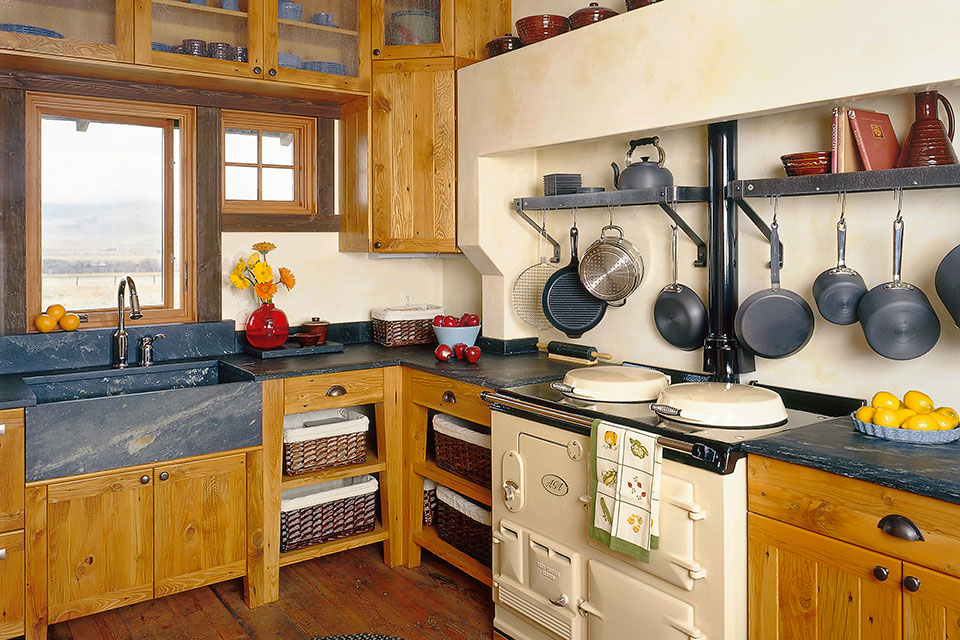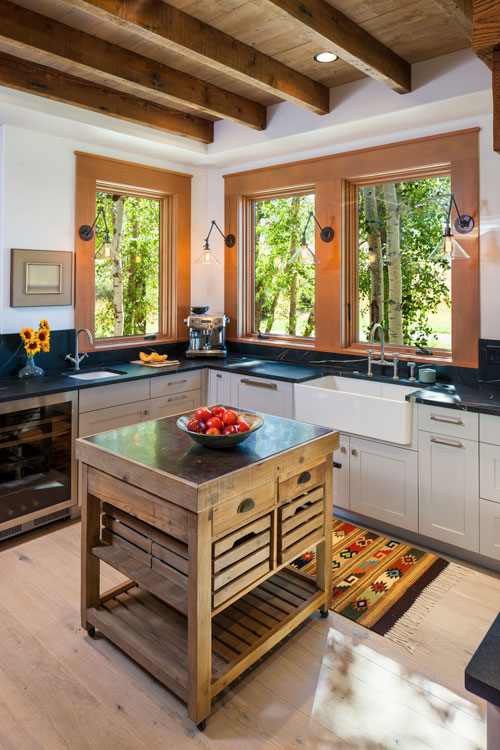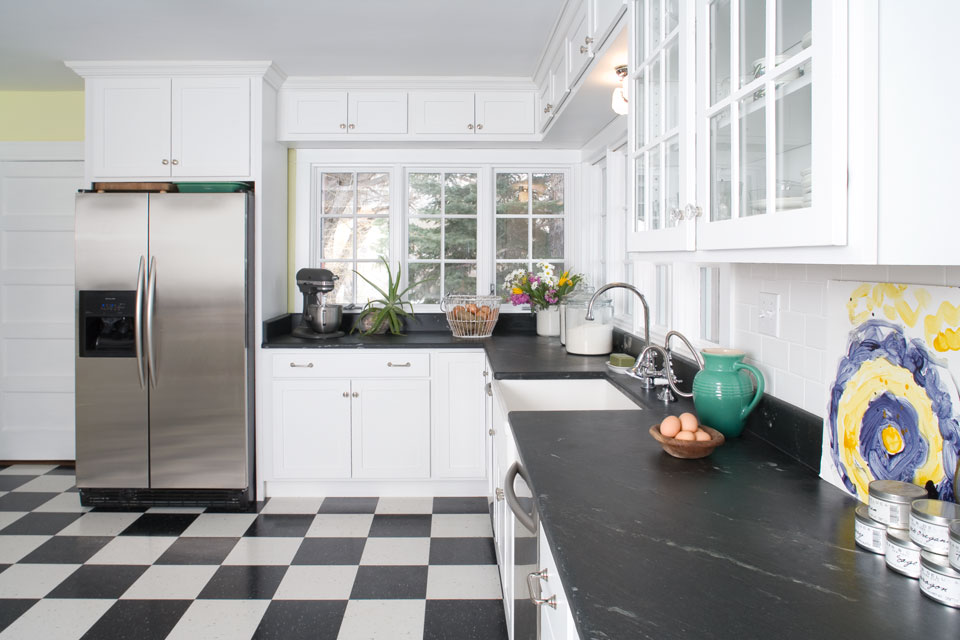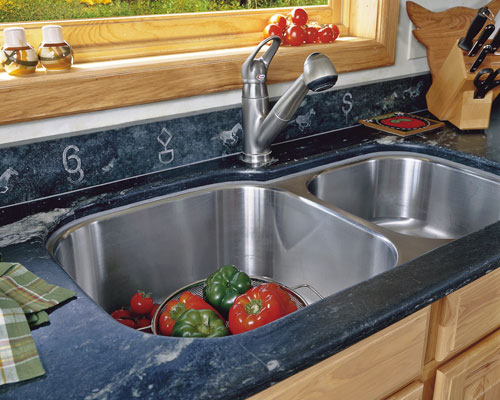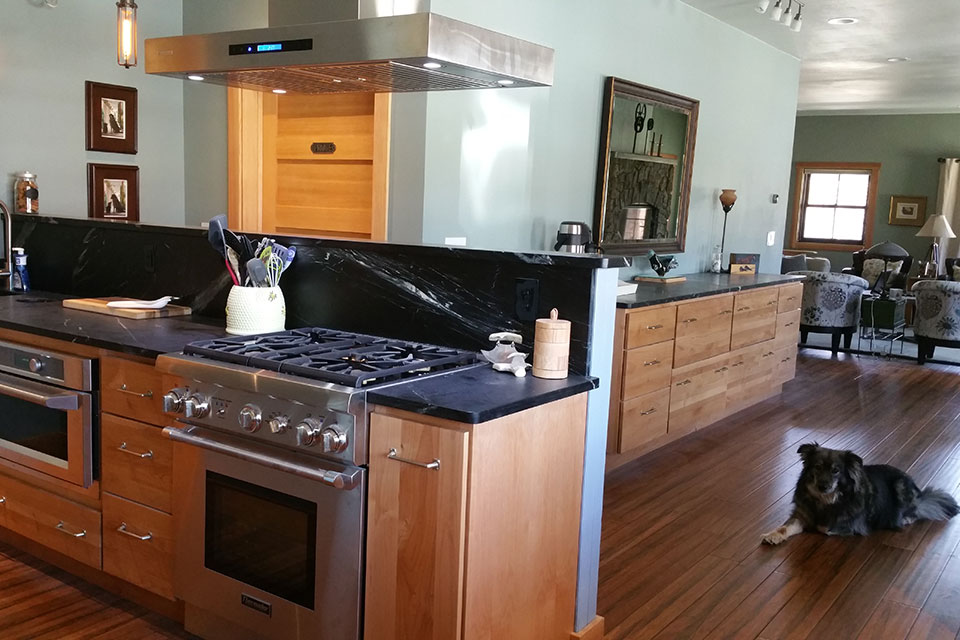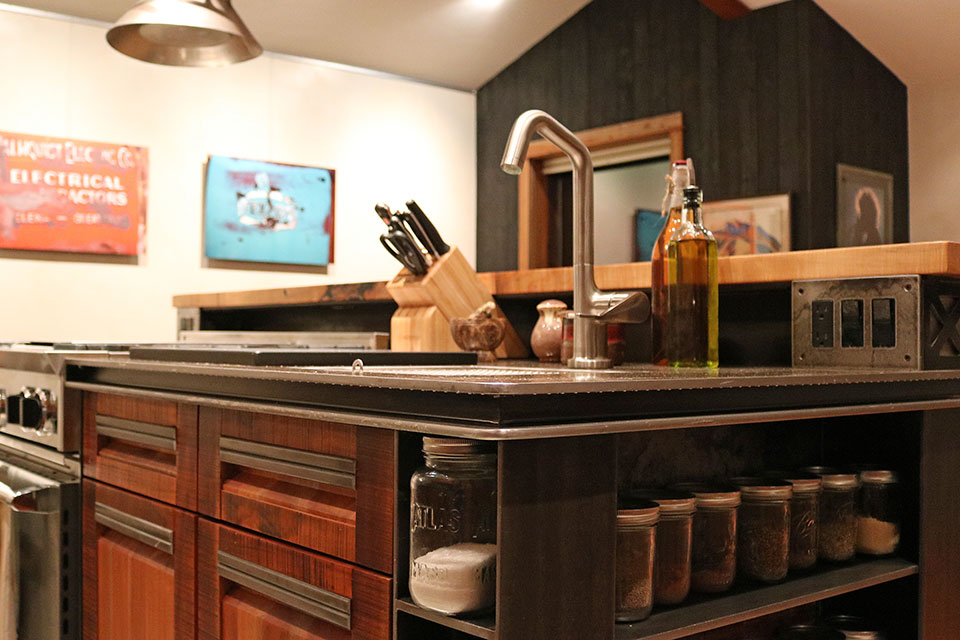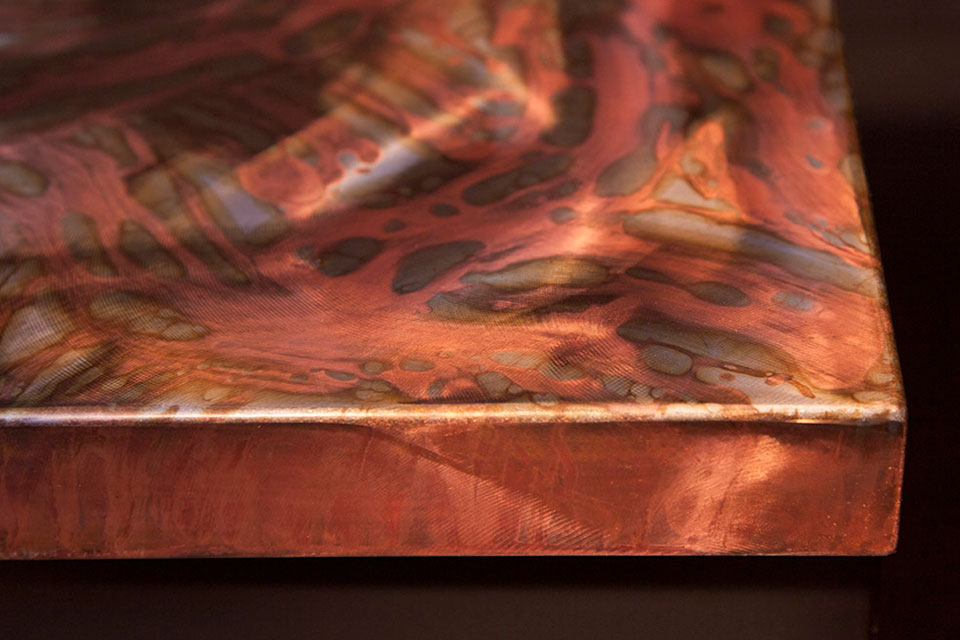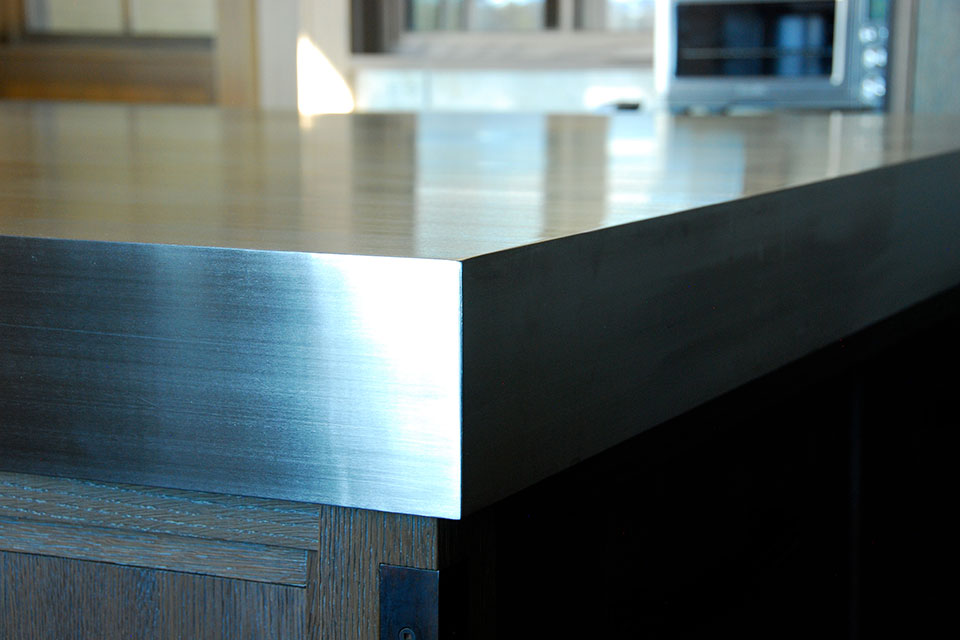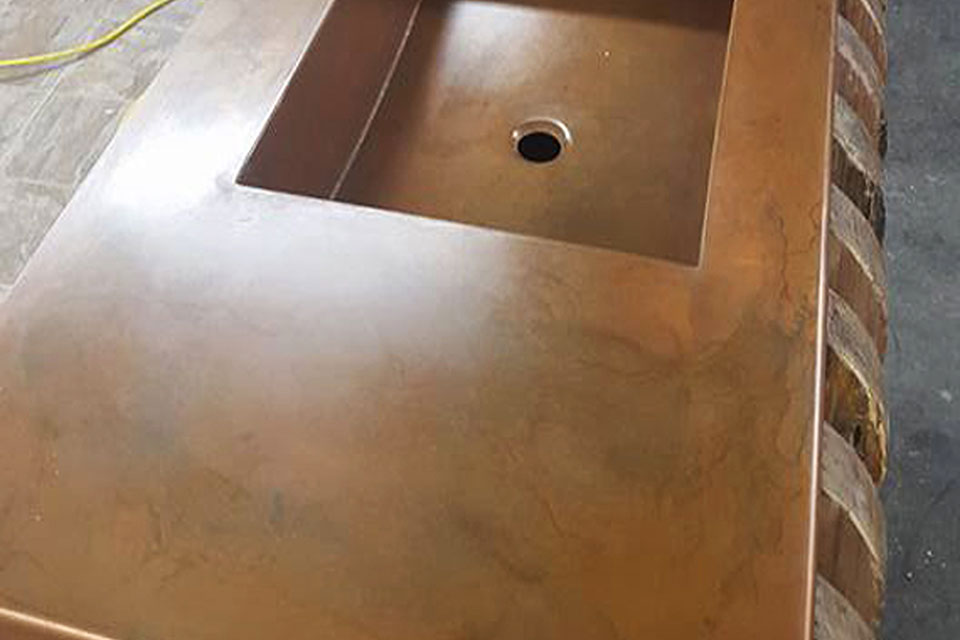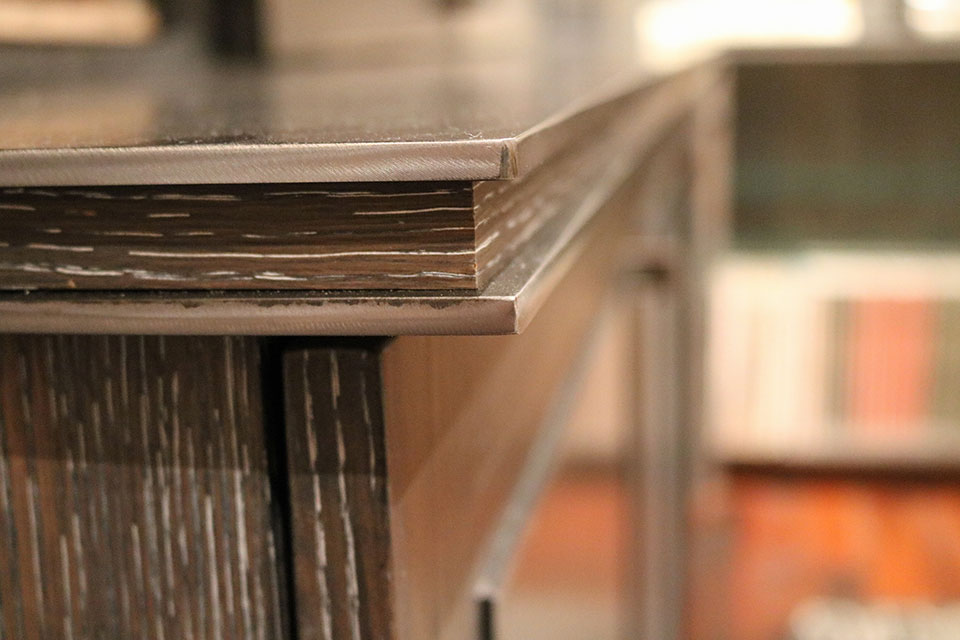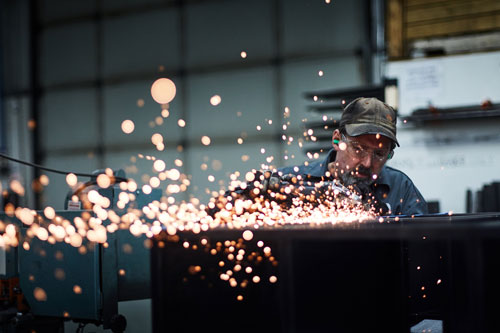How Different Countertop Materials Write the Story of Your Home
Whether we notice them or not, countertops are the centerpieces of our homes.
Countertops are a key selection for kitchens. They weigh down a space to give it presence, establish the foundation for color and design, and also act as a practical hub for home activities. When choosing your countertop, you’re choosing a piece that will bring in its own sense of place and history, while you build your own. Two Montana craftsmen share their ideas on the materials that do it best.
Softening Space with Soapstone
Ron Pihl has a sense for history as it is expressed in stone. His business, WarmStone Fireplaces & Designs, has been installing Tulikivi soapstone fireplaces in luxury mountain homes since 1991. During one of those installations, he saw his client installing soapstone as a countertop material. He decided it was something he had to pursue.
Formed in high-pressure, high-heat environments of pre-historic Earth about two billion years ago, soapstone is the densest, heaviest stone in the world. In addition to surviving billions of years of history, soapstone makes up the literal foundation of American architecture. Quarried in Virginia and Vermont for hundreds of years (although now more likely sourced from Finland or Brazil), soapstone has been the age-old go-to for American builders for sinks, tiles, cookware, fireplaces, and, you guessed it, countertops.
“The cornerstones of Independence Hall in Philadelphia are made out of soapstone,” says Pihl. “If you’re looking for stone for your kitchen or bathroom, soapstone is worth considering.” His inventory is the largest in Montana with 70 different slabs in six different varieties available for customers to choose and customize on demand.
Don’t let its storied history fool you—soapstone has its place in contemporary architecture. “Soapstone goes well with any décor,” says Pihl. “Nothing looks better paired with wood in a rustic home. At the same time, put dark soapstone in a modern, white kitchen, and it will look fantastic.”
No matter what you’re looking for, you can anchor your home with soapstone without giving up a stylish aesthetic. Despite its weight, with the right fabricator, the look of soapstone can be incredibly variable. Pihl’s long-time job superintendent, Phil Bullard, and crew work with giant slabs to fulfill the look of continuity made trendy by granite or quartz countertops.
“We’ve got soapstone that looks like white marble, other soapstone that’s black like slate, and everything in between. Plus, we have things that are colorful,” says Pihl, noting some pieces with hints of blues and greens.
“We’ve got soapstone that looks like white marble, other soapstone that’s black like slate, and everything in between.”
–Ron Pihl, Owner, WarmStone
“There are people who don’t treat soapstone and let it darken over time. It develops its own patina, specific to the owner. People buy it because they want it to wear.”
–Ron Pihl, Owner, WarmStone
Options are also nearly limitless with respect to shape. “Soapstone is easy to work with because it’s a softer stone. It’s easy to cut and shape,” adds Pihl, whose fabricators appreciate the malleability of the stone. That softness does make the surface vulnerable to wear in some cases, but many of Pihl’s clients have sought soapstone for that exact reason.
“You could say that soapstone is extremely durable in the sense that it will last forever,” explains Pihl. “But people who can’t handle a little bit of surface wear shouldn’t get soapstone countertops. It will get dings, it will scratch, but that’s not necessarily a bad thing.”
When you get soapstone countertops, you either use wax or mineral oil to darken and seal the surface to prevent it from getting stained by grease or oil in the kitchen. That’s perhaps the best part of soapstone: it won’t stain or burn. High school chemistry labs use soapstone for a reason: it withstands acid, heat, bacteria, and toxic materials. If and when it gets scratched, owners can treat the surface with oil to cover the blemish, or lightly sand out scratches. Or not.
“There are people who don’t treat soapstone and let it darken over time,” says Pihl. In that sense, each stone develops its own history, starting the day a family installs it. “It develops its own patina, specific to the owner. People buy it because they want it to wear.”
Soapstone has survived billions of years of geologic history, hundreds of years of American growth, and dozens of trend-specific eras. How will your history be defined by soapstone?
Soapstone countertops fit seamlessly into a traditional mountain kitchen. In addition to fireplaces and countertops, WarmStone also sells soapstone kitchenware like bowls and pizza stones.
Breaking Barriers
On 34 Wildcat Way, there is a 22,000-square-foot studio where 26 craftsmen, designers, and engineers are pushing the limits of innovation in Western architecture. Jeff Brandner and the rest of his team at Brandner Design are artists embodying the freedom of the American West by taking chances, creating opportunities, and working to make even the most mundane parts of a home works of art.
“Design is a process,” says Brandner, who emphasizes creativity and customization with his clients. “That’s what’s so exciting. We get to take something as simple as a countertop and make it extraordinary.”
Brandner Design emphasizes a balance of extremes. They mix materials, mix themes, and mix traditions that accentuate and juxtapose each other in a way that is strikingly satisfying. For countertops, they mix steelwork with woodwork to create a warm, industrial feel at home in a progressive mountain landscape. And, no, “warm, industrial” is not an oxymoron.
“Our design aesthetic has always been an industrial, contemporary style that defies the stereotypical industrial look,” says Brandner. “That doesn’t have to be a raw, cold style. It can be clean and sophisticated if it’s done right.” When it comes to blending an industrial motif into Montana’s mountain landscape, Brandner Design does it right.
Countertops are one of the few surfaces that are made to be both seen and touched. When mixing materials for countertops, the key is to find the right blend to be both contemporary and warm. Modern, yet inviting. “There’s a common misconception that steel is cold and not a great material for a homeowner to touch, feel, and have close,” says Brandner. “We work warmth into our designs, using patinas to give the surfaces an earthy, appealing feel to them.”
While at first clients aren’t used to the idea of steel countertops, once they see what Brandner Designs can do with a hunk of steel with wood accents, it quickly becomes one of their favorite parts of their home. And, while clients’ tastes adapt to steel, the steel itself adapts to the clients.
The kind of patina finish Brandner and his team use to warm the texture of the steel is a living finish. After the patina’s original reaction with the steel changes the metal’s color, it tends to continue to react over time. That change is a large part of its appeal.
“It’s a finish, not a paint. It’s going to change and adapt to its environment,” says Brandner, who doesn’t see aging and wear as a drawback, but rather a benefit of steel countertops. “A living finish has an iridescence, depth, and hand-finished quality to it.” Steel may not be for everyone, but it is a surface that grows with its owner and can be easily refinished and repaired. It has found a place in the growing Bozeman and Big Sky architectural landscapes.
“Our design aesthetic has always been an industrial, contemporary style that defies the stereotypical industrial.”
–Jeff Brandner, Owner, Brandner Design
Zinc countertops like this one bring in another element of variability. They fit nicely into today’s contemporary designs.
Patinas react with metal and continue to do so over time. A PATINA’D steel table is at once ever-changing and forever in style.
Steel is durable, modern, and endlessly customizable. It just takes the right team to make it yours.
Copper sinks and countertops bring warm tones to metalwork, and are cornerstones to Brandner Design’s work.
Mixing patina’d steel with warm woods opens up the possibilities for innovation in western home design.
The image of changing patina atop a blended steel and wood structure works as an apt metaphor for the work of Brandner and his team. Freed by the openness of the West, they are able to adapt and invent as their creativity demands, all the while bringing together the themes of industrial and mountain design.
“For me as an artist, the West presents a clean palette for interjecting design sensibilities. We want to retain Western quality to our work, and pay homage and respect to the landscape by bringing in other styles to complement it,” he says. “The West to me is a promise land for pushing limits, and it just keeps getting better.”
“Design is a process. That’s what’s so exciting. We get to take something simple and make it extraordinary.”
–Jeff Brandner, Owner, Brandner Design
